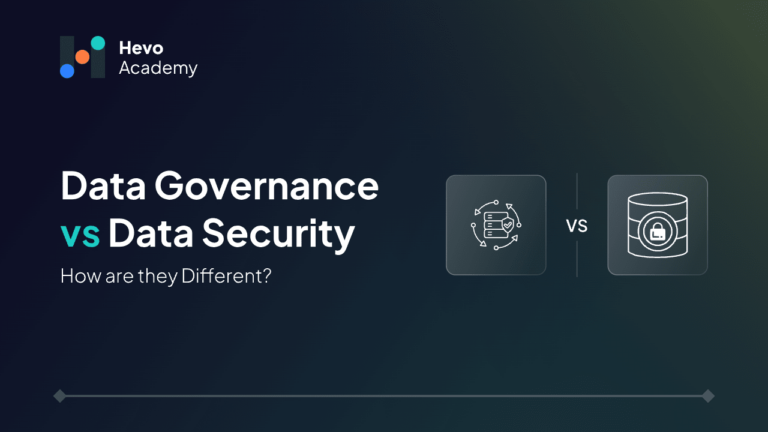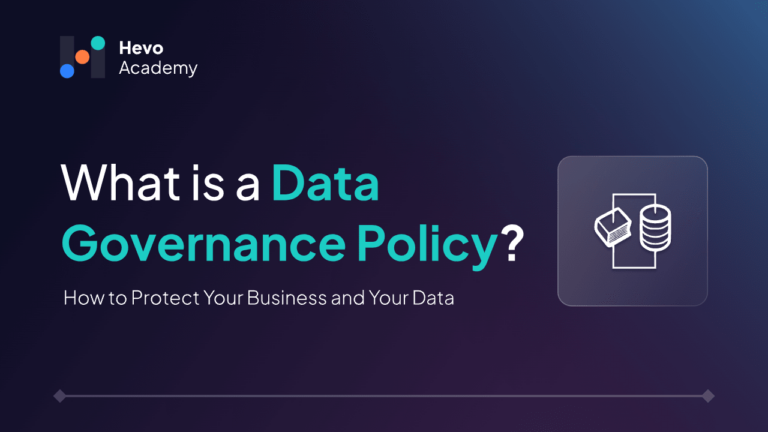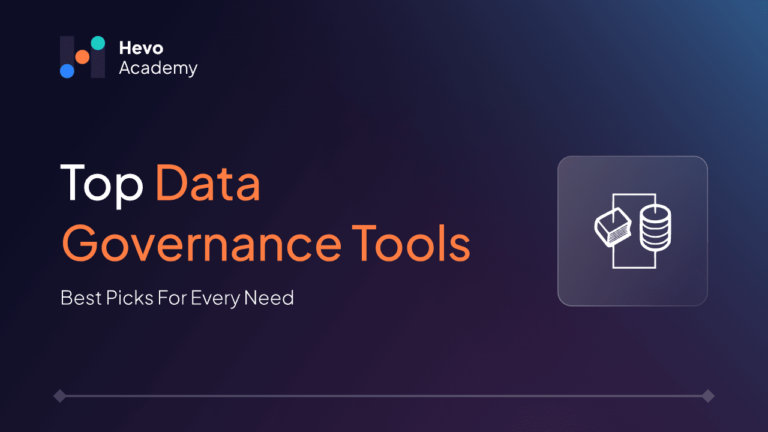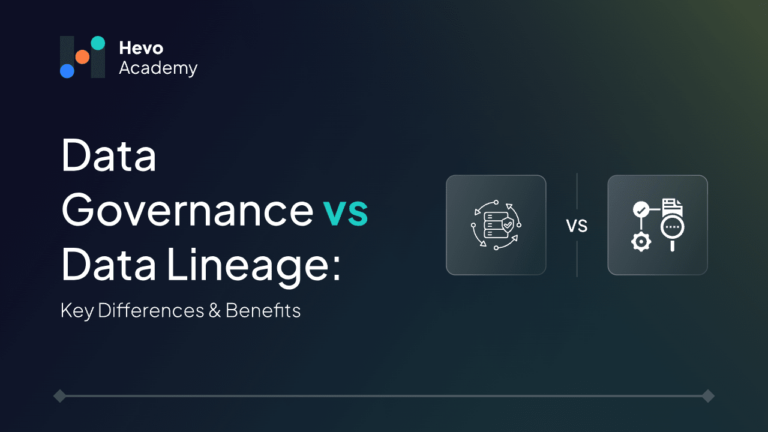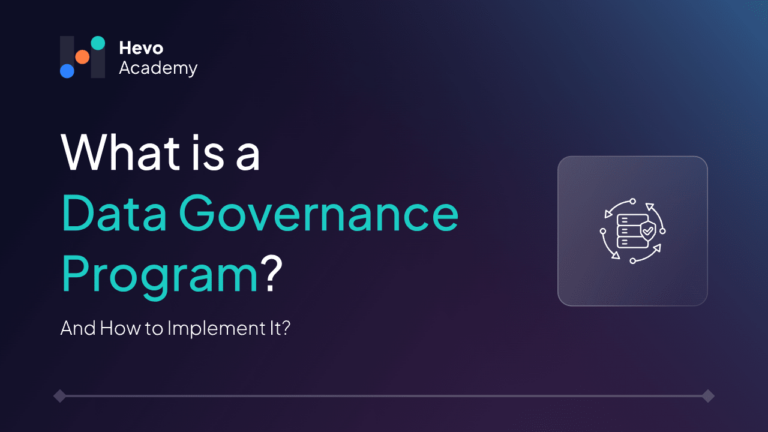Data plays a vital role in enhancing decision-making and organizational performance. Data governance focuses on establishing rules to manage data, ensuring its accuracy, availability, and compliance with regulations. On the other hand, data security safeguards data from unauthorized access, disclosure, or cyber-attacks.
Table of Contents
When comparing data governance vs data security, both are essential for maintaining the integrity and protection of data. While data governance ensures the correct handling of data, security measures protect it from breaches, enabling businesses to make informed decisions with reduced risks.
How can we Differentiate Between Data Governance vs Data Security?
| Aspect | Data Governance | Data Security |
| Focus | Responsible for the accuracy, availability, and conformity of data. | Hinders unauthorized access and breaches in data circuits. |
| Purpose | Helps to utilize data as an important resource. | Protect and seal the data from unauthorized individuals |
| Scope | Pertaining to administration, handling, and responsibilities of data. | Entails the use of technical features such as encryption and firewalls. |
| Responsibility | Identifies precisely who is responsible for data ownership as well as management throughout the organization | Governing the frequencies with which data is available and the uses that can be made of it. |
| Risk Management | Emphasizes on reducing the risks which are inherent in poor management of data | Tends to address threats which are affiliated with cyberspace dangers. |
| Data Lifecycle | Controls data throughout its life cycle including generation, storage and disposal. | Mainly involved in the process of securing the information from the time it is stored to the time it is transferred and requested. |
| Compliance | This makes sure that strict organizational data management rules such as GDPR and HIPAA on accurate utilization of data are followed. | This helps to observe the rules and terminations of the security regulations for example PCI-DSS and ISO 27001 in the defense of sensitive information. |
| Data Quality | Stresses on data quality for commerce by encouraging accuracy, uniformity, and exhaustiveness of data. | Ensure that when data is stored or transmitted between computers, its original format and content have to be maintained, that is, it has to remain ‘untouched’. |
| Stakeholders | Engages the business leadership, data owners, and legal compliance together with the concerns about the utilization and management of the data. | Mainly by IT security personnel, cybersecurity staff, and system administrators. |
| Accessibility | Provides policies which define who should have the data, when he or she should have it and in what form. | Controls physical access to data to prevent employees and other unauthorized employees from accessing, viewing, or changing it. |
| Data Stewardship | Includes data stewardship activities for controlling, supervising, and enforcing data governance regulations. | Applies security methods through creating specific security teams and the use of systems to provide protection in real-time. |
| Data Retention | Provides guidelines on the periods within which data should be retained, backed up or destroyed. | Adopts measures that support the safe retrieval of data after it has been retained for some time it needs to be gotten rid of. |
| Data Privacy | Maintains the government policies for data protection to provide an appropriate process for personal and sensitive data. | Ensures data privacy by implementing encryption, access control, and anonymization techniques. |
| Impact on Decision Making | This ensures that decision making processes being undertaken are rooted on quality, accurate and easily retrievable data. | Protects the company from security threats in such a way that the process of decision making within the firm is not affected. |
| Performance Metrics | Responsible for overseeing the efficiency of data governance regulations, based on the degree of data accuracy, compliance and availability. | Records effectiveness of security solutions including the level of successful attempts at preventing breaches or attacks. |
| Data Sharing | Specifies interfaces for getting and distributing data and information within and outside an organization and in a compliant way with pre-existing governance rules. | Provides data protection at transit to avoid disclosure or compromising of the data in case it is in transit between systems. |
| Cultural Role | Encourages organizations to focus on quality data, and in the process helps to foster proper data culture. | Encourages a security awareness culture, to prevent the loss of data in an organization. |
| Automation | Tools for automating data governance tasks such as data classification, auditing, and compliance checks. | Tools like security incident and event management systems (SIEM) for real-time monitoring and protection. |
What is Data Governance?
Data governance could be defined as the systematic management of data as an organizational resource. It entails mapping roles, responsibilities, and activities that guarantee the accuracy, consistency, and availability of data.
Components of Data Governance
Data governance comprises the following principles to attain effective data management.
- Data Quality: Accurateness and completeness of data.
- Compliance: Ensuring necessary regulations and laws for data.
- Trust: Data must be transparent and reliable.
- Data Stewardship: Delegating roles and responsibilities for managing data.
How is Data Governance Used in Today’s Businesses?
- Data Quality is highly relevant to the reporting and data analysis in financial companies.
- Credible information on products, pricing, and inventory enables organizations to create formidable customer experience.
- Data compliance is an essential component of healthcare to protect a patient’s information based on legal regulations.
- In the field of e-commerce, data reliability is of utmost importance in helping consumers.
See the difference between data reliability and data validity to make informed decisions.
Data Governance Tools
- Microsoft Purview: A complete solution to data governance services, allowing business entities to discover, classify and manage data in their ecosystems.
- Collibra: A comprehensive tool that focuses on the issues of data quality, compliance as well as data stewardship.
- Alation: A helpful tool whose primary function is to manage data catalogs.
What is Data Security?
Data security is the process of safeguarding data from any form of tampering, loss or misuse. It covers the use of technologies, policies and procedures aimed at maintaining data confidentiality and comprehensible accessibility to the permitted users only.
Components of Data Security
Secure data management is made up of several elements that complement each other in preserving information. These components include:
- Encryption: Transforms data into a shielded format.
- Access Control: Regulates the alteration of data using passwords, fingerprints, ID, or other authentication methods.
- Data Masking: Hides certain data in a database.
- Disaster Recovery: Prescribes ways and means of data restoration in case of a security attack.
- Firewalls: Limit the remote access to the systems.
How is Data Security Used in Today’s Businesses?
- Encryption is used to protect customers’ transactions and personal data in financial institutions.
- Big data security measures such as MFA (multi-factor authentication) are also included in social media Platforms.
- Data masking is performed to ensure that the Personally Identifiable Information (PII) of the clients such as the credit card numbers.
- To prevent the loss or corruption of data there are daily, weekly, and monthly backups that are created to make sure that the business can continue as normal in the event of system crashes.
- Firewalls and Antivirus are required to prevent unauthorized access and for detection of any malicious softwares.
Data Security Tools & Techniques
Access control systems use different platforms to control users’ access and make sure that only persons with the appropriate permissions can view the data. Such tools are as follows:
- LDAP (Lightweight Directory Access Protocol)
- IAM (Identity & Access Management)
Another safeguard of computer security is encryption where data is transformed into other formats which are difficult to decipher by unauthorized individuals. Such encryption techniques include:
- Secure Hash Algorithm (SHA)
- Advance Encryption Cipher (AES)
- Rivest-Shamir-Adleman (RSA)
Common Challenges of Data Governance and Data Security
- Meeting the legal and compliance needs of newly developed legislation such as GDPR and HIPAA.
- Handling and protecting large volumes of data including cloud data.
- The use of access controls and data across separate distributed systems lead to inconsistencies in security measures.
- Protecting from Internal threats whether intentional or due to mistakes.
- Conflict between access to the data and its protection, often results in inconvenience for users.
Best Practices to Align Data Governance vs Data Security
Best Practices to Align Data Governance
- Regular Data Audits: Conducting periodic audits in order to review how much data is being used.
- Compliance with Regulations: Conduct reviews on the data governance policies so that they are in compliance with the various acts such as GDPR, HIPAA and CCPA.
- Training and Awareness: Conduct training programs for those employees who might pose a high risk to the organization’s data.
Best Practices to Align Data Security
- Implement Strong Access Controls: Applying role-based access controls mechanisms in order to restrict data usage by employees and contractors.
- Encryption and Masking: Secure databases by incorporating data storage with data masking and encryption techniques to ensure proper protection.
- Data Classification: Classifying information according to security levels.
Conclusion
Data governance is crucial as it involves the actions, rules, and responsibilities required for proper data management in an organization. Through setting of these frameworks, organizations are in a position to ensure compliance with regulatory rules as well as upholding the right standards of data integrity. However, data security refers to the action of guarding such information from being accessed or used in a wrong way such as encrypted, accessed or hidden data.
Data backup, disaster planning, and monitoring are essential for governance and security, protecting operations and mitigating risks. Also, SIEM systems, firewalls, and antivirus create extra layers of protection against cyber threats.
Try Hevo for no-code, zero-maintenance data integration, and keep your data teams up to date. Sign up for a 14-day free trial today.
FAQS
1. Is data governance part of information security?
No, data Governance is centered on controlling data, its quality, conformity, use and even the various stages through which data passes in an organization. Information security deals with shielding data from threats and leakage.
2. Is information governance the same as data security?
Information governance focuses on the effective control and management of an organization’s information assets throughout their usefulness while data security mainly deals with the protection of information from threats resulting from unauthorized access.
3. What is an example of information security governance?
An example of information security governance is the development of an organizational policy that outlines who can access what, the type of encryption to use and how to handle a security breach among others.

